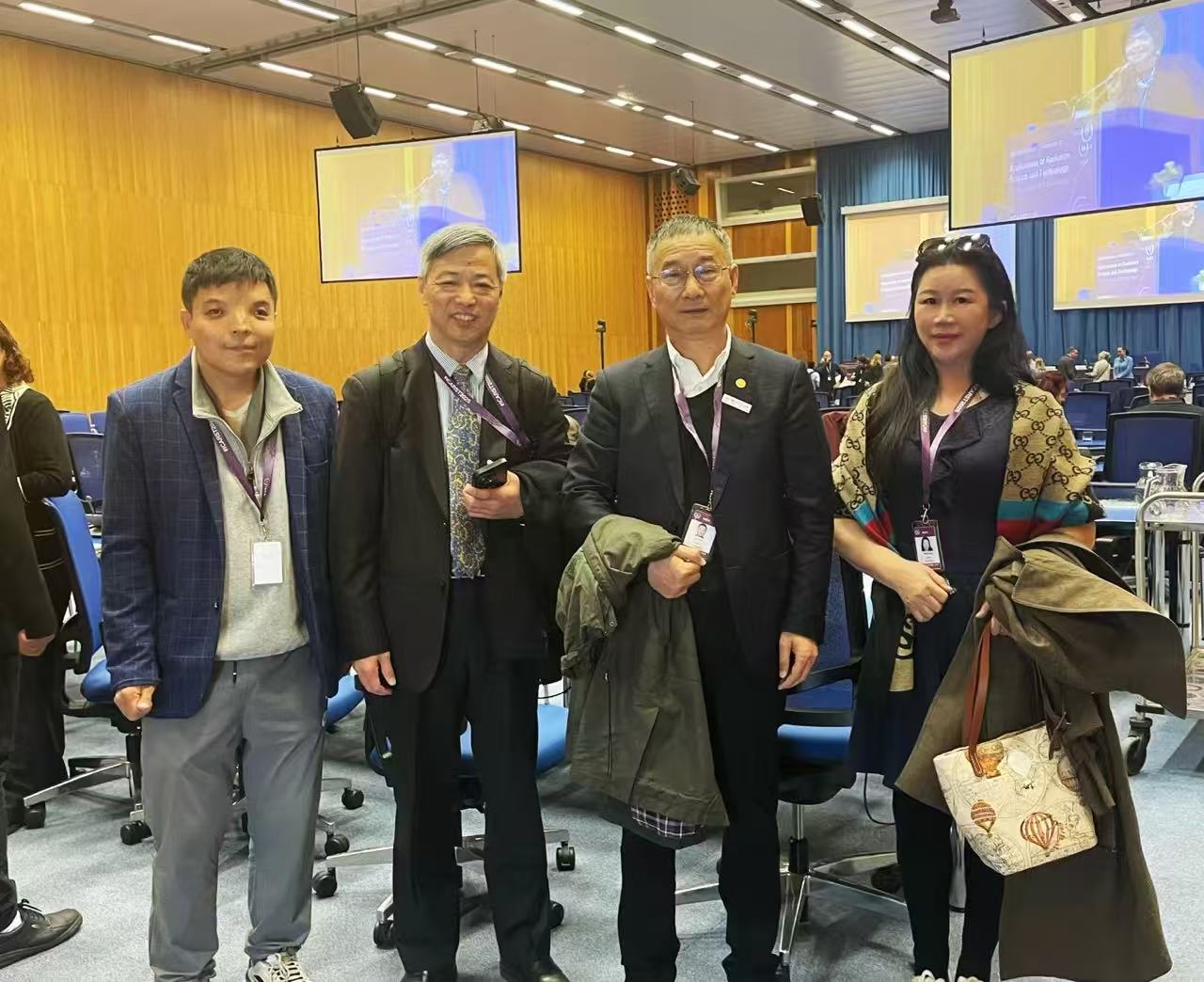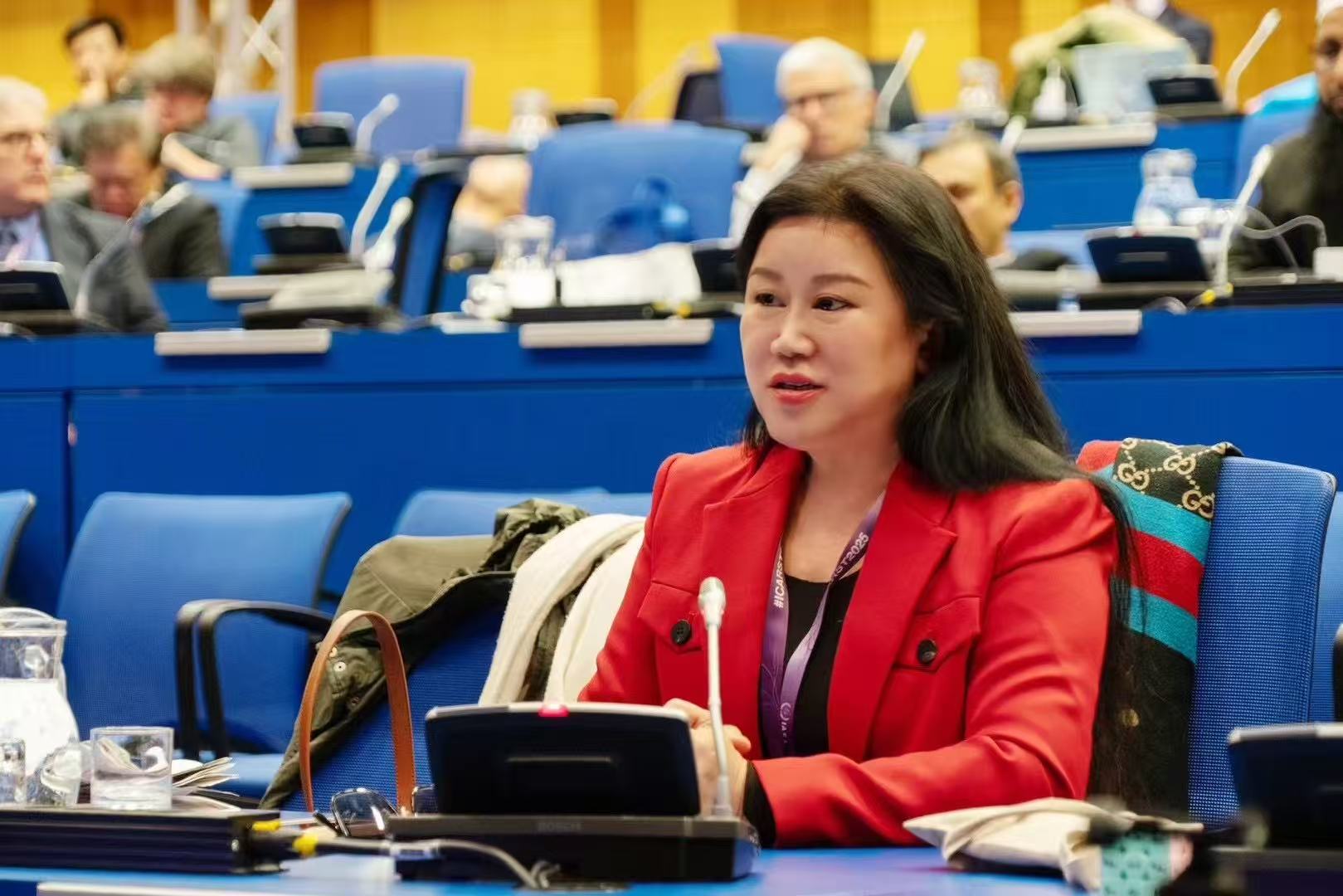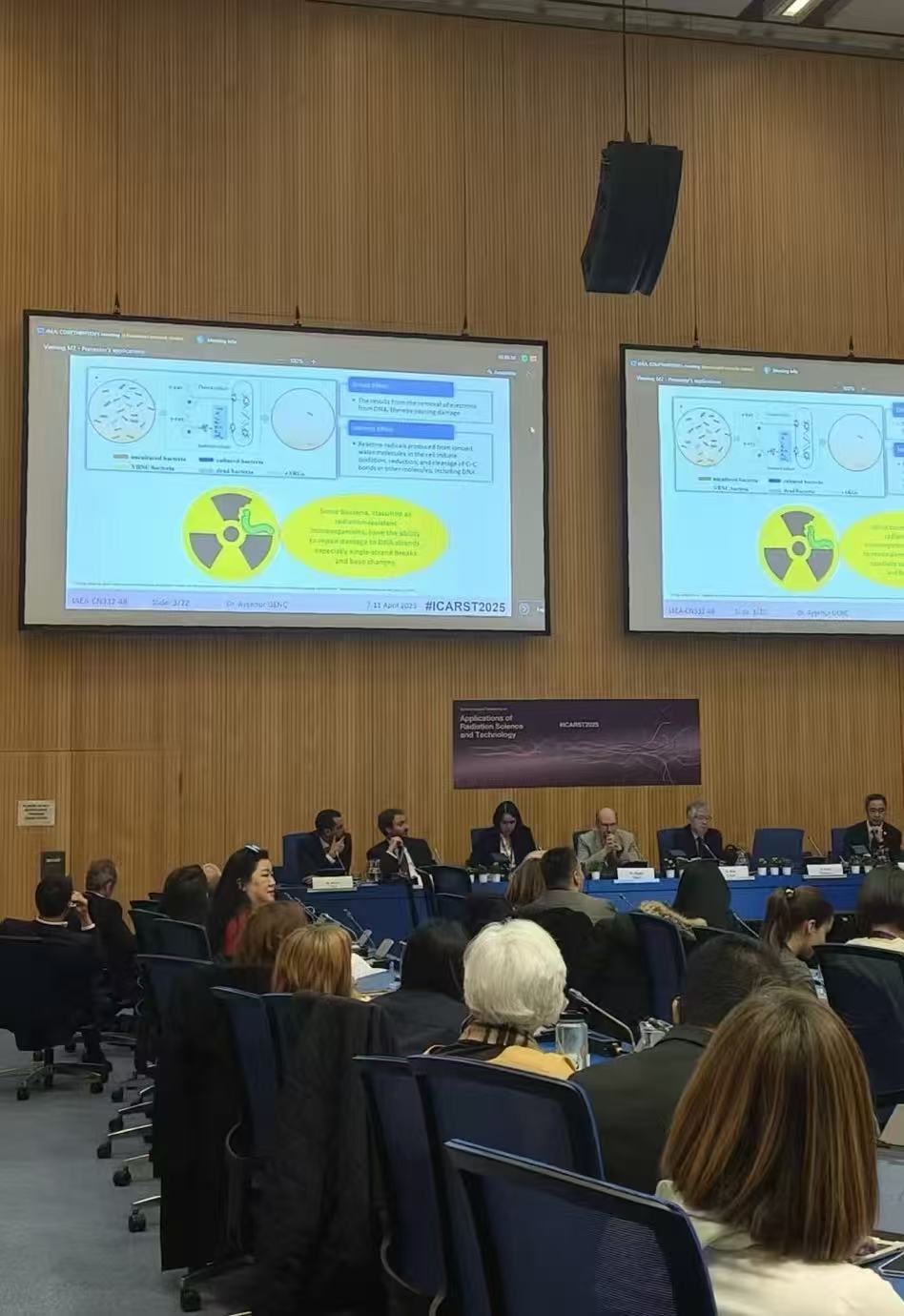Professor Tang Danling and Dr. Yang Xiaobo Participated in the ICARST 2025
发布时间:2025-4-11

The 3rd International Conference on Applications of Radiation Science and Technology (ICARST 2025) was held from April 7 to 11, 2025, at the headquarters of the International Atomic Energy Agency (IAEA) in Vienna, Austria. Professor Tang Danling and postdoctoral researcher Yang Xiaobo from of the Southern Marine Science and Engineering Guangdong Laboratory (Guangzhou) attended the conference. They participated in key sessions including “Remote Sensing Monitoring of Radioactive Seawater” and “Irradiation-Generated High-Performance Plastics from Recycled Materials,” and engaged in the Chinese side event titled “Radiation Technology for a Better Home.”
On April 8, the China Atomic Energy Authority (CAEA),
the China Isotope and Radiation Association, and the
China Isotope & Radiation Corporation jointly hosted the
side event “Radiation Technology for a Better Home.” The
event highlighted China’s advancements in radiation
technology applications, including food preservation,
radiation medicine, irradiation-assisted seed selection,
and radiation detection sensors. Professor Tang and Dr.
Yang joined discussions on nuclear wastewater
management, as well as the effective detection range and
sensitivity of radiation sensors.
South China Sea U Team, leaded by Professor
Tang Danling,
specializes in satellite remote sensing for marine
ecological environment research and marine disaster
early warning, with a focus on environmental challenges
such as nuclear wastewater, contaminated water, and
marine microplastics. Recently,
Tang Danling and
Yang Xiaobo co-authored the research
article ”Can Contaminated Waters from the Fukushima
Daiichi NPP Penetrate the East China Sea? ” published in
Pure and Applied Geophysics. At ICARST 2025, they
presented their findings on the monitoring and
distribution mechanisms of radioactive contaminated
water, fostering in-depth exchanges with international
experts.
Organized by the IAEA under the theme “Radiation Science
and Technology: Solutions for Sustainable Development,”
the conference brought together global academic leaders
and industry stakeholders through 12 plenary sessions,
28 specialized forums, and 5 satellite events,
showcasing interdisciplinary innovations in radiation
science and technology. Nearly 1,000 experts, scholars,
and industry representatives from 104 countries and
regions presented 32 keynote reports and over 200
academic papers. Conference outcomes were made globally
accessible through the IAEA’s knowledge-sharing
platform.
The conference underscored the pivotal role of radiation
science and technology in addressing global
sustainability challenges, while also spotlighting
China’s contributions to advancing these fields.


